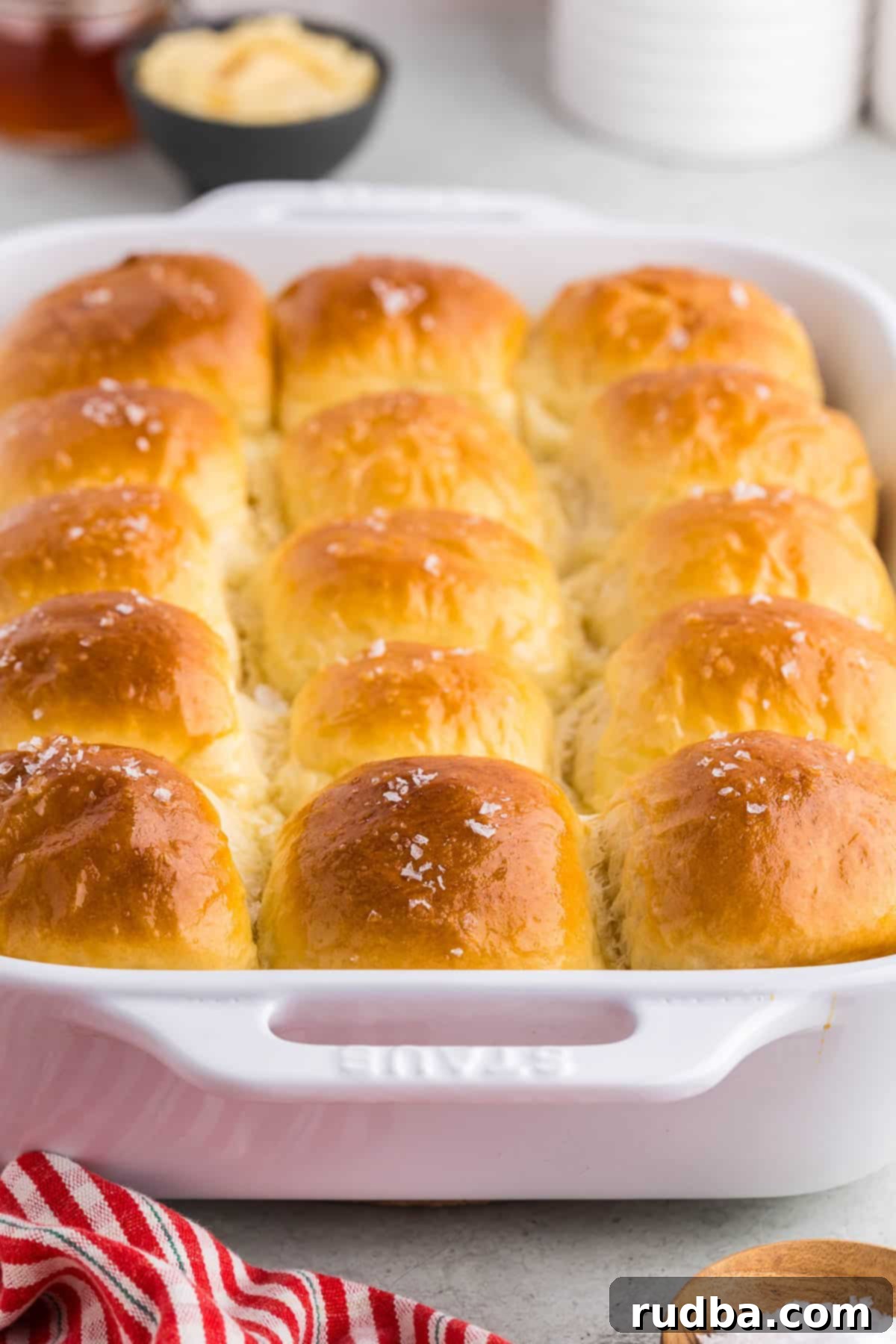Homemade Parker House Rolls with Honey Butter: The Ultimate Fluffy & Buttery Dinner Rolls Recipe
There’s nothing quite like the comforting aroma and taste of freshly baked bread. And when it comes to classic comfort food, Parker House rolls truly stand out. These incredibly light, fluffy, and buttery dinner rolls are a staple for good reason. Imagine them warm from the oven, brushed with a luscious honey butter that melts right into their tender crumb. That’s exactly what you’ll get with this homemade Parker House roll recipe. I’ve perfected these rolls over several attempts, and my family agrees: the honey butter transforms them from simply great to absolutely unforgettable. Trust me, you won’t want to skip that step!
These versatile rolls are perfect for any occasion, whether served as a side with a fresh creamy lobster pasta, alongside a vibrant salad, or as the star of your holiday meal. Their soft texture and rich flavor make them an ideal accompaniment to virtually any dish.
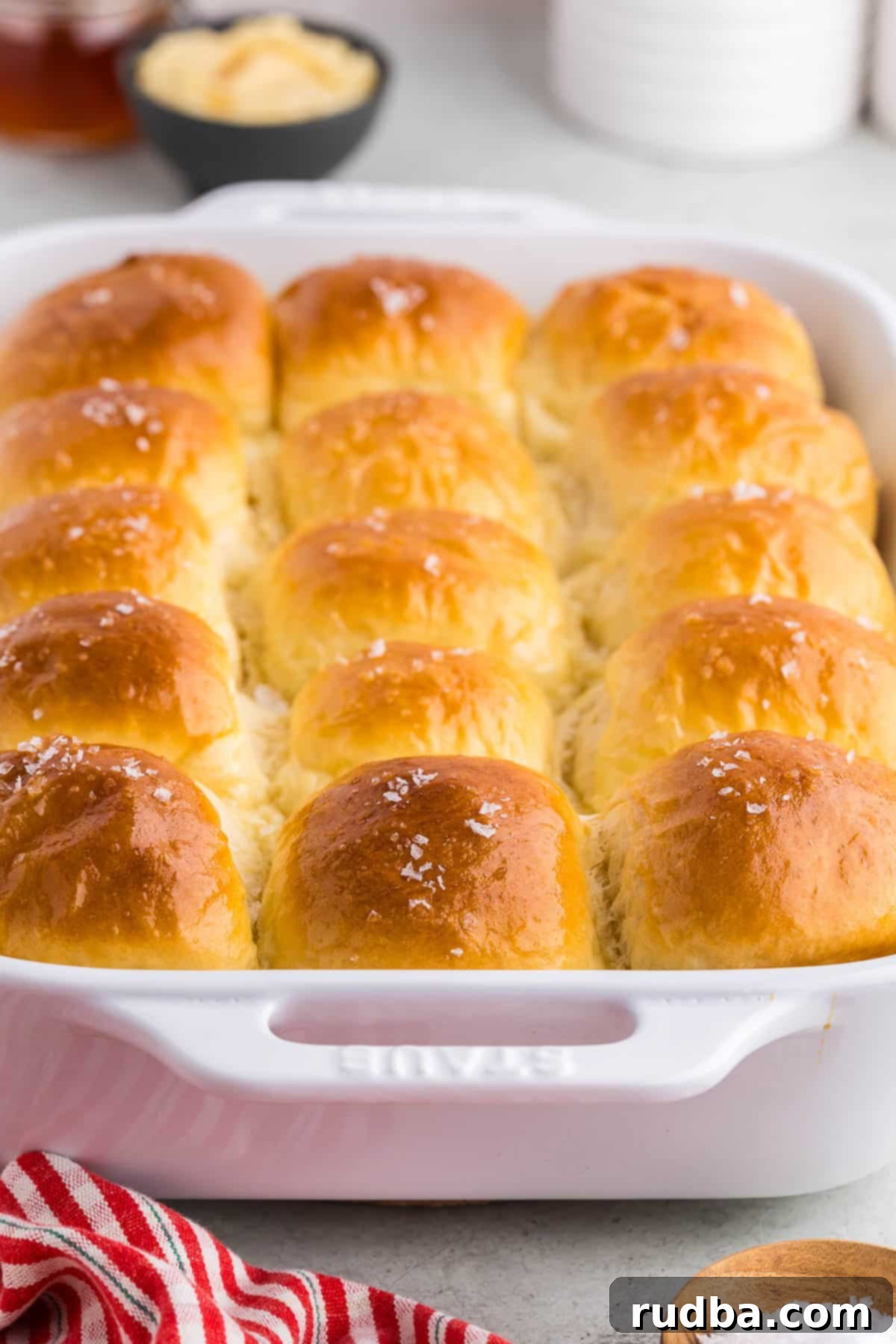
Table of Contents
- Why Make These Parker House Rolls?
- The Legacy of Parker House Rolls
- Key Ingredients for Perfect Rolls
- Expert Baking Tips for Success
- Storage and Reheating Tips
- Parker House Rolls with Honey Butter Recipe
- Frequently Asked Questions (FAQ)
Why Make These Parker House Rolls?
While buying dinner rolls might seem convenient, making Parker House rolls from scratch offers a deeply rewarding experience and superior results. Here are compelling reasons to roll up your sleeves and get baking:
- No Preservatives, Just Pure Goodness: When you bake at home, you control every ingredient. This recipe ensures your rolls are free from artificial preservatives and additives, providing a wholesome and natural treat for your family.
- Economical and Gourmet: Enjoy restaurant-quality rolls without the hefty price tag. Making them yourself is significantly cheaper than purchasing them from a high-end bakery or restaurant, especially given the generous yield of 15 rolls.
- Freshness You Can Taste: There’s nothing quite like pulling a warm tray of these golden-brown beauties straight from your own oven. The incredible aroma fills your kitchen, and the melt-in-your-mouth texture is simply unmatched by store-bought alternatives. Serve them immediately for the ultimate fresh experience.
- Versatile Leftovers (If There Are Any!): Should you be lucky enough to have any rolls leftover (a rare occurrence in my house!), they are wonderfully versatile. Transform them into delicious ham and cheese sliders for a quick lunch, or serve them toasted with breakfast the next day. They also make fantastic mini sandwiches.
The Legacy of Parker House Rolls
These iconic rolls boast a rich history, originating at the renowned Parker House Hotel in Boston during the 1870s. Legend has it that a disgruntled baker, frustrated with a customer’s complaint, intentionally shoved unfinished rolls into the oven. The result was a uniquely shaped, buttery, and incredibly tender roll that quickly became a sensation. The Parker House Hotel proudly claims to be the birthplace of these beloved rolls, a tradition that has endured for over a century and a half. Today, they remain a popular choice, gracing dinner tables across America with their distinctive folded shape and irresistible flavor.
Key Ingredients for Perfect Rolls
Achieving the perfect Parker House roll comes down to a few critical ingredients. Paying attention to these details will ensure your rolls are light, airy, and full of flavor:
(For a complete list of ingredient quantities and detailed instructions, please refer to the recipe card below.)
- Salted Butter: This recipe specifically calls for salted butter, both in the dough and for the honey butter. The salt content in the butter enhances the overall flavor profile of the rolls, providing a beautiful balance to the sweetness and richness. If you only have unsalted butter, you may want to increase the kosher salt in the dough slightly.
- Bread Flour: Do not substitute all-purpose flour for bread flour in this recipe. Bread flour has a higher protein content, which develops more gluten during kneading. This higher gluten content is crucial for creating the characteristic soft, chewy, and airy texture that defines a classic Parker House roll. It gives the rolls the necessary structure to rise beautifully and maintain their shape, resulting in a truly superior final product.
- Whole Milk (Room Temperature): Using whole milk adds richness and tenderness to the dough. Ensuring it’s at room temperature is vital for optimal yeast activity. Cold milk can shock the yeast, slowing down the proofing process significantly.
- Instant Rise Yeast: This type of yeast is fantastic for bakers as it doesn’t require proofing beforehand. It can be mixed directly with the dry ingredients, streamlining the process. (See notes below if you only have active dry yeast).
- Eggs (Whole & Yolk): The combination of a whole egg and an egg yolk contributes to the rolls’ rich flavor, golden color, and incredibly tender crumb. The yolk, in particular, adds extra fat and richness, making the rolls softer and more decadent.
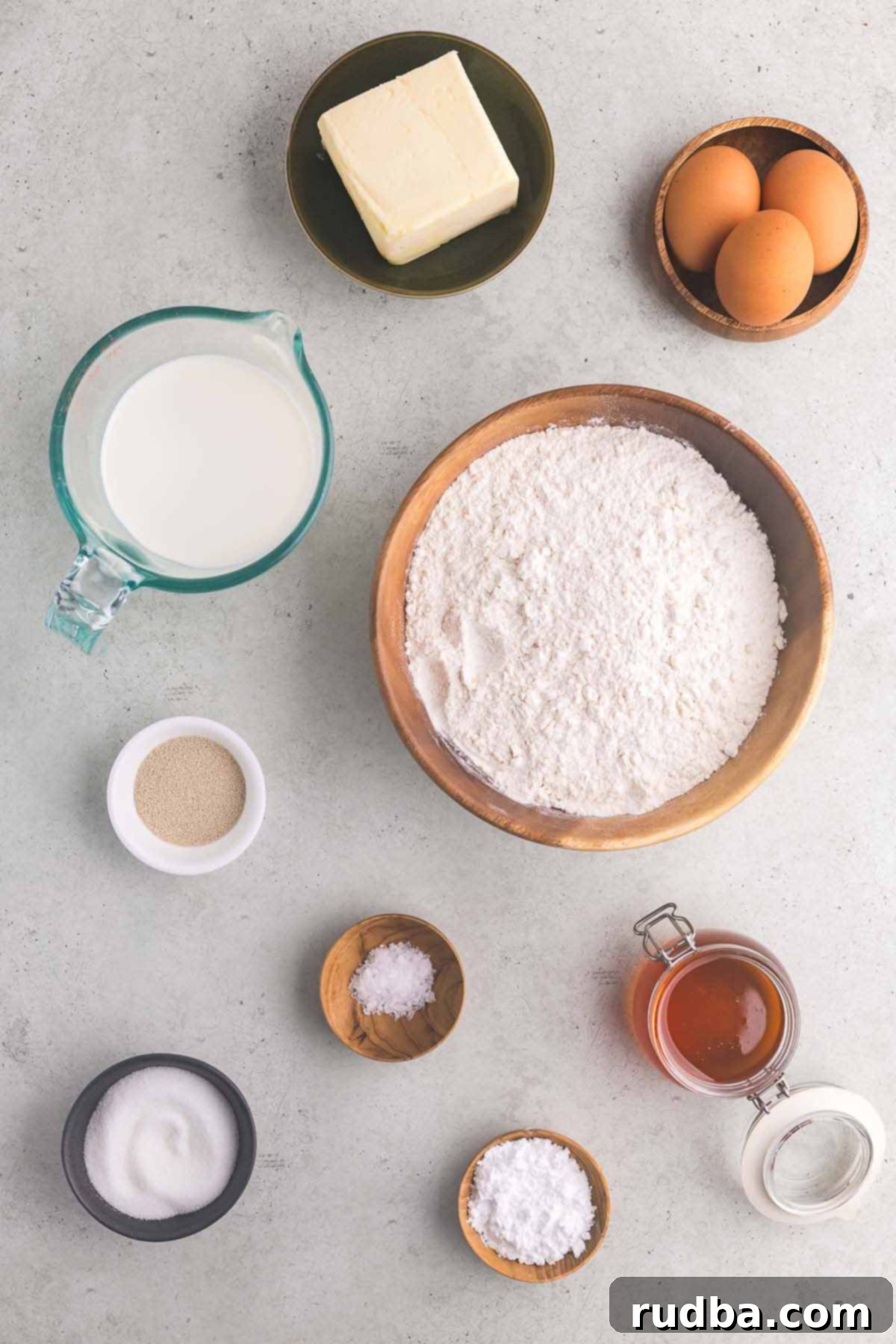
Expert Baking Tips for Success
Baking can be an art, and a few insider tips can make all the difference in achieving perfect Parker House rolls every time:
- Mind the Flour Measurement: Adding too much flour is a common pitfall that leads to dry, dense rolls. The dough should be slightly sticky but should pull away cleanly from the sides and bottom of the mixing bowl as it kneads. If it’s sticking excessively, add flour just one tablespoon at a time, allowing each addition to fully incorporate before deciding if more is needed. Err on the side of a slightly stickier dough for a softer roll.
- The Unbuttered Edge Trick: When flattening your dough portions into rectangles, ensure you leave about a ¼-inch unbuttered edge. This unbuttered strip is crucial for securely pinching the dough together to form the classic folded bun shape. Butter makes the dough slippery, preventing it from sealing properly. This small detail ensures your rolls hold their shape beautifully during baking.
- Don’t Stress Over the Seam: While shaping, it’s easy to worry about achieving a perfectly seamless bun. Rest assured, minor imperfections at the seam are completely fine. The rolls will bake seam-side down in the pan, so any small blemishes will be hidden, leaving you with a perfectly smooth, golden top.
- Avoid Overbaking: Overbaking is the enemy of soft, tender rolls. Keep a close eye on your rolls in the last few minutes of baking. They should be golden brown on top, but still soft to the touch. An internal temperature of 190°F (88°C) is ideal. If they bake too long, they will dry out and lose their signature melt-in-your-mouth quality.
- The Magic of Honey Butter: I cannot emphasize this enough: serving these rolls with the homemade honey butter is non-negotiable! The warm, sweet, and slightly salty butter brushed over the hot rolls adds an incredible depth of flavor and moisture that elevates them from an 8 to a perfect 10. It’s the essential finishing touch.
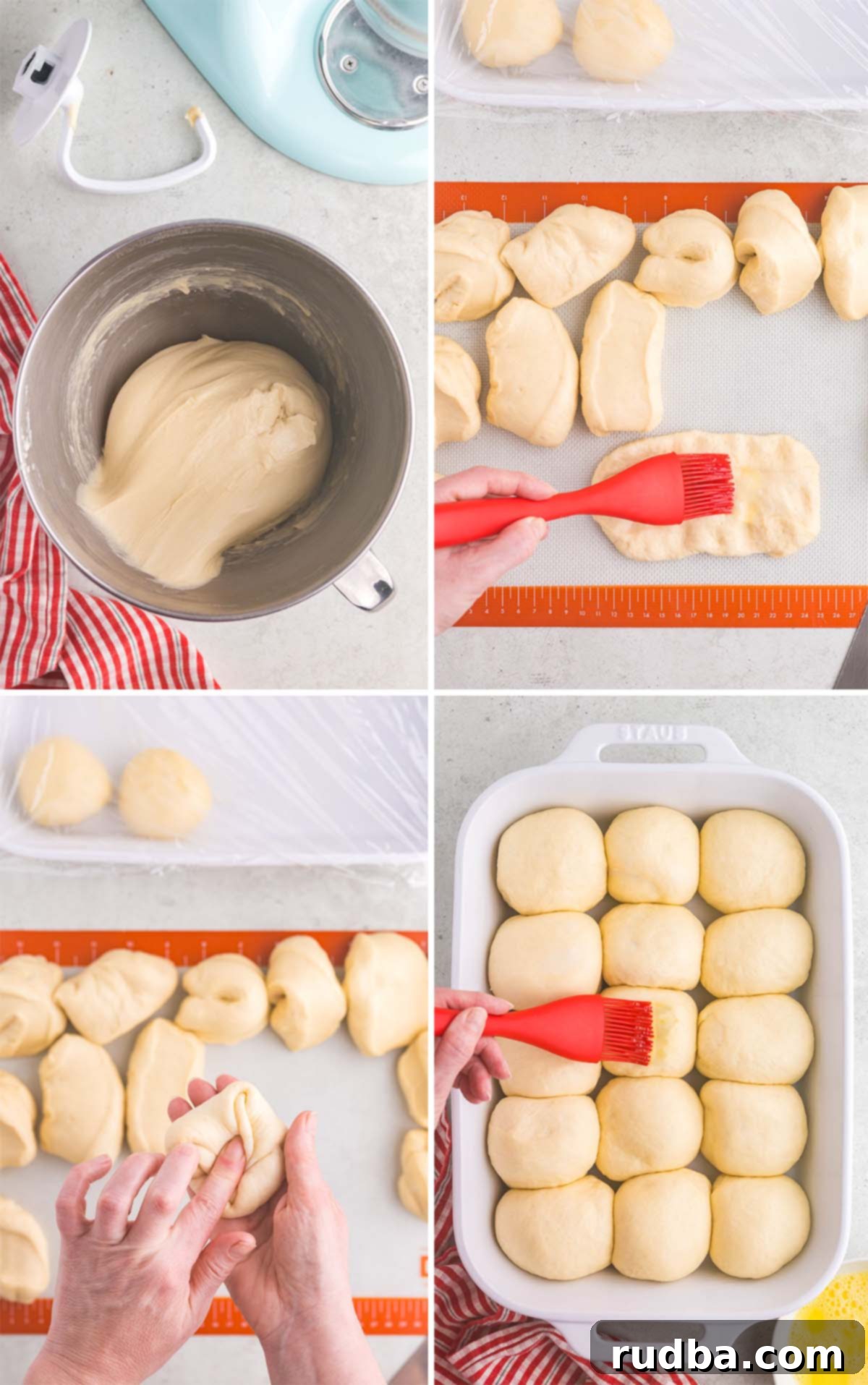
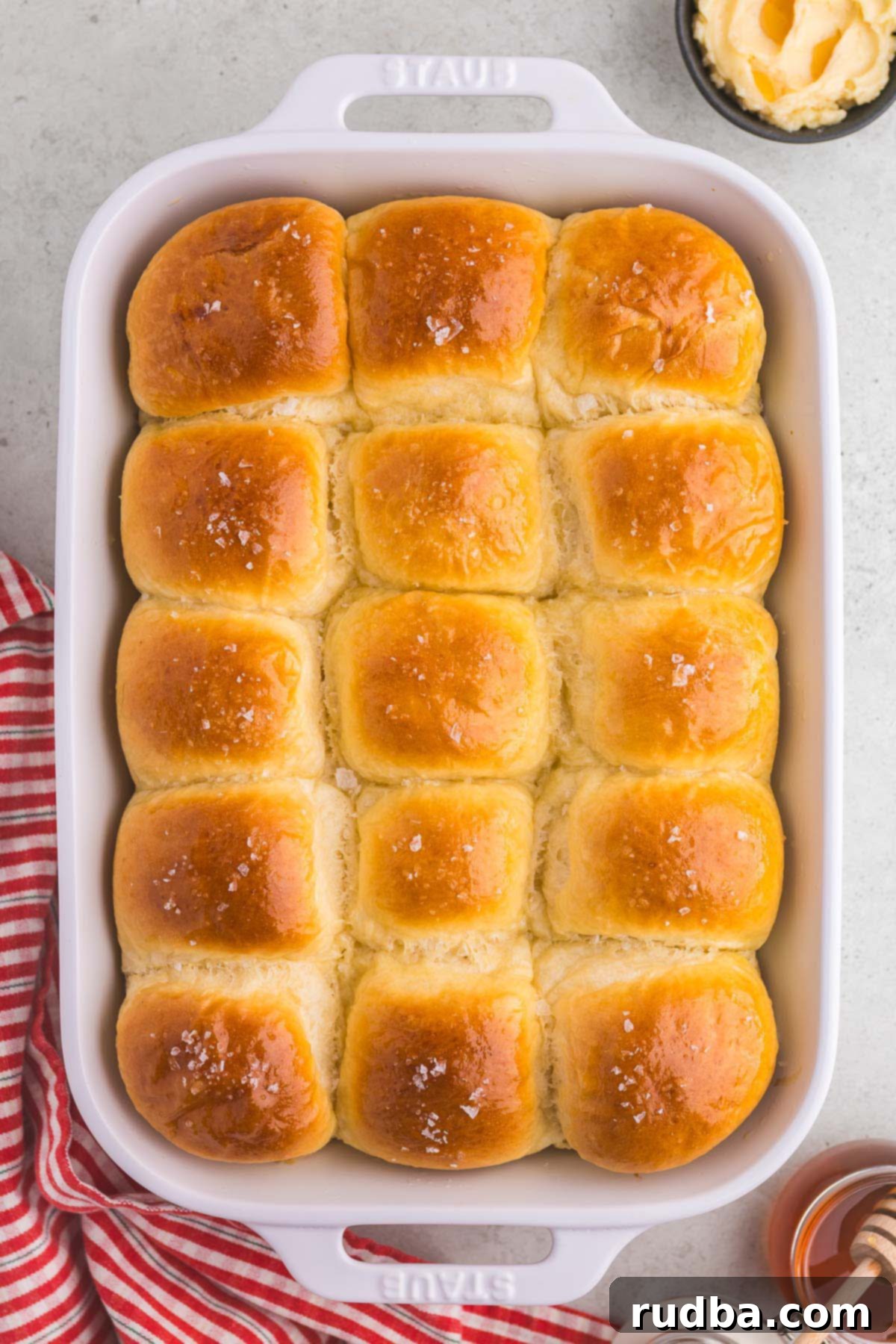
Storage and Reheating Tips
Parker House rolls are undeniably at their best enjoyed fresh from the oven, but proper storage allows you to savor their deliciousness for a little longer:
- Countertop Storage: If you plan to eat them within a day, store leftover rolls in an airtight container at room temperature. This helps maintain their softness and prevents them from drying out too quickly.
- Freezing for Longer Freshness: For longer storage, freezing is your best option. Once the rolls have completely cooled, separate them into individual buns to prevent sticking. Place them in an airtight, freezer-safe container or a heavy-duty freezer bag. They can be stored in the freezer for up to 1-2 months.
- Thawing and Reheating:
- Thawing: Simply pull the frozen rolls out and let them thaw on the counter for about 30 minutes before serving.
- Oven Reheating: For a “just baked” experience, after thawing (or even directly from frozen if you have a little more time), heat them in a preheated oven at 350°F (175°C) for a few minutes until warmed through and slightly crisp on the outside.
- Air Fryer Reheating: For a quick refresh, an air fryer works wonders. Heat thawed rolls for about 1 minute at 350°F (175°C). Be careful not to overcook them, as air fryers can dry out bread quickly.
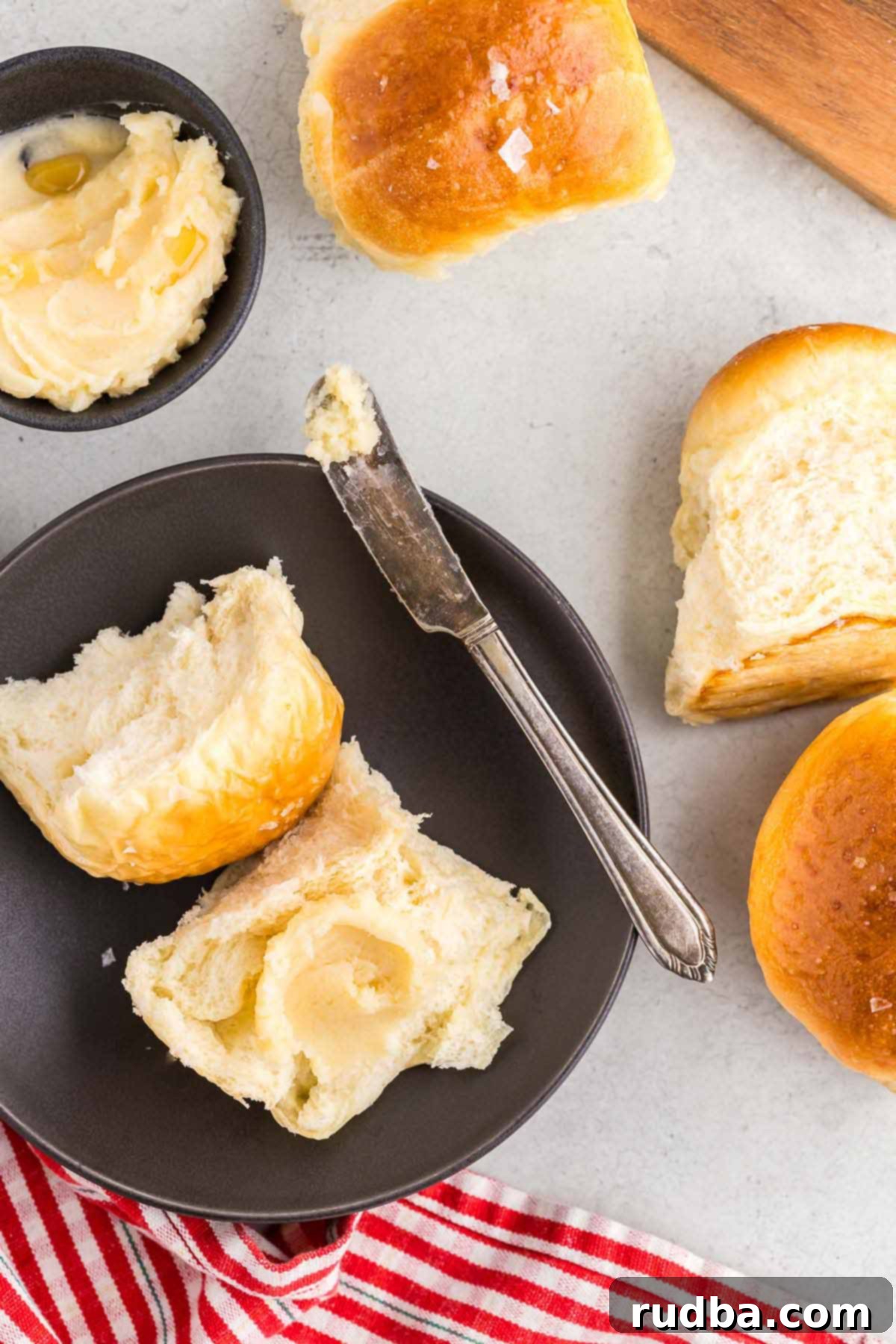
Tried This Recipe?
Your feedback means the world to me! If you’ve tried making these delectable Parker House Rolls, please leave a review. I love hearing about your experience and would greatly appreciate it ❤️
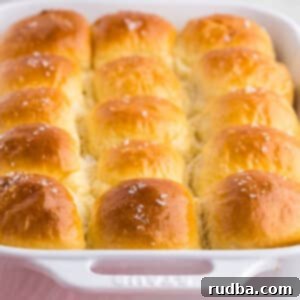
Parker House Rolls with Honey Butter
Julie Maestre
35 minutes
25 minutes
1 hour
45 minutes
2 hours
45 minutes
15
Save Recipe
Saved Recipe
Pin Recipe
Rate Recipe
Print Recipe
Equipment
-
9×13 baking dish
-
Electric mixer or can knead by hand
Ingredients
-
3 ¾
cups
Bread Flour (spooned and leveled) -
¼
cup
Sugar -
2 ½
teaspoons
Instant Rise Yeast -
2
teaspoons
Kosher salt -
1 ¼
cup
Whole Milk,
at room temperature -
¼
cup
Salted Butter (softened and divided into 4 portions) -
1
Large Egg -
1
Large Egg Yolk -
4
tablespoons
Salted Butter,
melted -
Flakey Sea Salt,
for garnishing, to taste
Egg Wash
-
1
large
egg -
1
teaspoon
water
Honey Butter
-
½
cup
Salted Butter ,
room temperature -
2
tablespoons
honey -
2
tablespoons
Confectioners Sugar
Prevent your screen from going dark
Instructions
To make the dough
-
In a large mixing bowl, preferably of a stand mixer, combine 3 ¾ cups bread flour, ¼ cup sugar, 2 teaspoons Kosher salt, and 2 ½ teaspoons of instant rise yeast. Ensure these dry ingredients are well mixed. (See notes below if you are using active dry yeast).
-
Add 1 ¼ cups room temperature whole milk, 1 large egg, and 1 large egg yolk to the dry ingredients.
-
Using the dough hook attachment, mix the ingredients on medium-low speed for about 1 minute until a shaggy ball of dough forms. Increase the mixer speed to medium and gradually add the softened ¼ cup butter in four equal portions, allowing each portion to be fully incorporated before adding the next. At this stage, the dough should be slightly sticky but should not cling to the sides or bottom of the bowl. If it does, add flour 1 tablespoon at a time until it no longer sticks. (See notes for more detail on dough consistency).
-
Once all ingredients are combined, continue kneading the dough in the stand mixer on medium speed for approximately 10 minutes. This develops the gluten, resulting in a soft and elastic dough.
-
Transfer the kneaded dough ball to a lightly greased bowl. Cover the bowl tightly with plastic wrap and let it rise at room temperature until it has doubled in size. The rising time will vary based on your room’s temperature and humidity, but typically takes between 1 hour to 1.5 hours.
-
While the dough is proofing, generously grease a 9×13 inch baking pan with butter. Set it aside.
-
Once the dough has doubled, gently punch it down to release the air. Transfer the dough to a lightly floured work surface or a silicone mat (silpat). For consistent roll sizes, it’s best to weigh the dough and divide it into 15 equal portions, each weighing approximately 64 grams. Keep the portions covered with plastic wrap while you work to prevent them from drying out.
-
Melt 4 tablespoons of salted butter in a small bowl and set aside. This butter will be used for brushing the dough during shaping and after baking.
Shaping the Rolls
-
Take one portion of dough. Using your fingers, gently press and stretch it into a rectangle approximately 5 x 2.5 inches.
-
Brush a light layer of the melted butter onto the top surface of the rectangle, ensuring you leave a ¼-inch border around all the edges unbuttered. This unbuttered edge is key for sealing the roll.
-
Fold the buttered rectangle almost in half lengthwise, so one of the unbuttered long edges remains exposed. Hold the folded dough in one hand. With your other hand, gently stretch the exposed unbuttered edge outwards, then fold it into the center. Press it down firmly with your finger to help seal it.
-
Rotate the dough slightly (about 45 degrees). Stretch a new edge and fold it into the center, pressing firmly again. Repeat this “rotate, stretch, fold, and press” process about three more times. This helps to create a smooth, taut ball. If needed, pinch the bottom seam tightly to ensure it’s sealed.
-
For a final touch, if the bun needs a little shaping, place the dough ball seam-side down on your work surface. Use a cupped hand to gently roll the dough ball until it forms a smooth, round shape. Place the finished bun, seam-side down, into the prepared 9×13 inch greased baking pan.
-
Continue this process until all 15 rolls are shaped and arranged in the pan. Cover the pan with plastic wrap and allow the rolls to undergo a second rise at room temperature for about 45 minutes. They should puff up and gently touch each other. Approximately 30 minutes into this second rise, preheat your oven to 350°F (175°C).
-
While the rolls are completing their second rise, prepare the egg wash by whisking together one large egg and one teaspoon of water in a small bowl.
-
Once the rolls have finished their second rise, carefully remove the plastic wrap. Gently brush the tops of the rolls with the prepared egg wash. Place the pan on the middle rack of your preheated oven and bake for 20-30 minutes. The rolls should turn a beautiful golden brown. You might want to rotate the pan halfway through baking to ensure even browning. To confirm doneness, insert a thermometer into the center of one roll; it should read 190°F (88°C).
-
Immediately upon removing the rolls from the oven, brush them generously with the remaining melted butter (from step 0-7) and sprinkle them with flakey sea salt, to taste.
-
Allow the rolls to cool in the pan for approximately 20 minutes before serving warm with your homemade honey butter.
Making the Honey Butter
-
Prepare the honey butter while the rolls are cooling to allow the flavors to meld.
-
In a small mixing bowl, combine ½ cup room temperature salted butter, 2 tablespoons honey, and 2 tablespoons confectioners’ sugar. Using an electric mixer, blend the ingredients on medium-high speed until the mixture becomes smooth, light, and creamy. Transfer the finished honey butter to a small serving dish.
Notes
Can I skip brushing the dough with butter before forming the roll? You can certainly skip this step, and your rolls will still turn out very good. However, brushing with butter beforehand does make it easier to form a nice, tight bun with a good fold. Traditionally, Parker House rolls incorporate butter during this shaping step, which contributes to their characteristic richness and tender layers.
IMPORTANT REMINDERS:
- Do not add too much flour! This is critical for soft, airy rolls. A dry dough will result in dense rolls. The dough should be somewhat sticky, but it shouldn’t cling to the bowl while being kneaded. Add flour sparingly, only 1 tablespoon at a time, if needed to prevent excessive sticking.
- Always leave a ¼-inch unbuttered edge around the rectangular pressed-out dough. This unbuttered margin is essential for successfully pinching the dough together to form the bun. If butter is present where you’re trying to seal the dough, it will struggle to stick to itself.
- When forming the dough bun, don’t worry excessively if the seam isn’t absolutely perfect. The bun will bake seam-side down in the pan, so any minor imperfections will not be noticeable in the final baked roll.
- Do not overbake your rolls! This is another key to tender, moist rolls. Overbaking will dry them out and make them tough. Look for a golden-brown top and an internal temperature of 190°F (88°C).
Frequently Asked Questions (FAQ)
Can I make the dough ahead of time?
Yes, you can! After the first rise, punch down the dough, form the rolls as instructed, and place them in the greased 9×13 pan. Cover the pan tightly with plastic wrap and refrigerate overnight (up to 24 hours). The next day, remove them from the fridge and let them come to room temperature and complete their second rise (this might take 1-2 hours) before baking.
What if my dough isn’t rising?
Several factors can affect yeast activity. Ensure your milk is at the correct temperature (room temperature for instant yeast, or 100-110°F for active dry yeast). Check the expiration date on your yeast; old yeast may not be active. Also, make sure your kitchen isn’t too cold; a warm spot can help with proofing.
Can I use a different type of flour?
While bread flour is highly recommended for its protein content and the resulting tender crumb, you can use all-purpose flour in a pinch. However, the texture of the rolls might be slightly less airy and soft. Avoid self-rising flour.
How do I know when the rolls are perfectly baked?
The tops should be golden brown, and an instant-read thermometer inserted into the center of a roll should register 190°F (88°C). If they start browning too quickly, you can loosely tent the pan with aluminum foil.
Nutrition
Calories:
263
kcal
|
Carbohydrates:
30
g
|
Protein:
5
g
|
Fat:
14
g
|
Saturated Fat:
8
g
|
Polyunsaturated Fat:
1
g
|
Monounsaturated Fat:
4
g
|
Trans Fat:
0.5
g
|
Cholesterol:
58
mg
|
Sodium:
401
mg
|
Potassium:
76
mg
|
Fiber:
1
g
|
Sugar:
7
g
|
Vitamin A:
444
IU
|
Vitamin C:
0.01
mg
|
Calcium:
37
mg
|
Iron:
0.4
mg
Nutrition information is automatically calculated, so should only be used as an approximation.
Additional Info
Julie Maestre
35 minutes
25 minutes
1 hour
45 minutes
2 hours
45 minutes
Bread
American
15
263
parker house rolls, dinner rolls, honey butter, homemade bread
Love this recipe? Leave a comment below!
